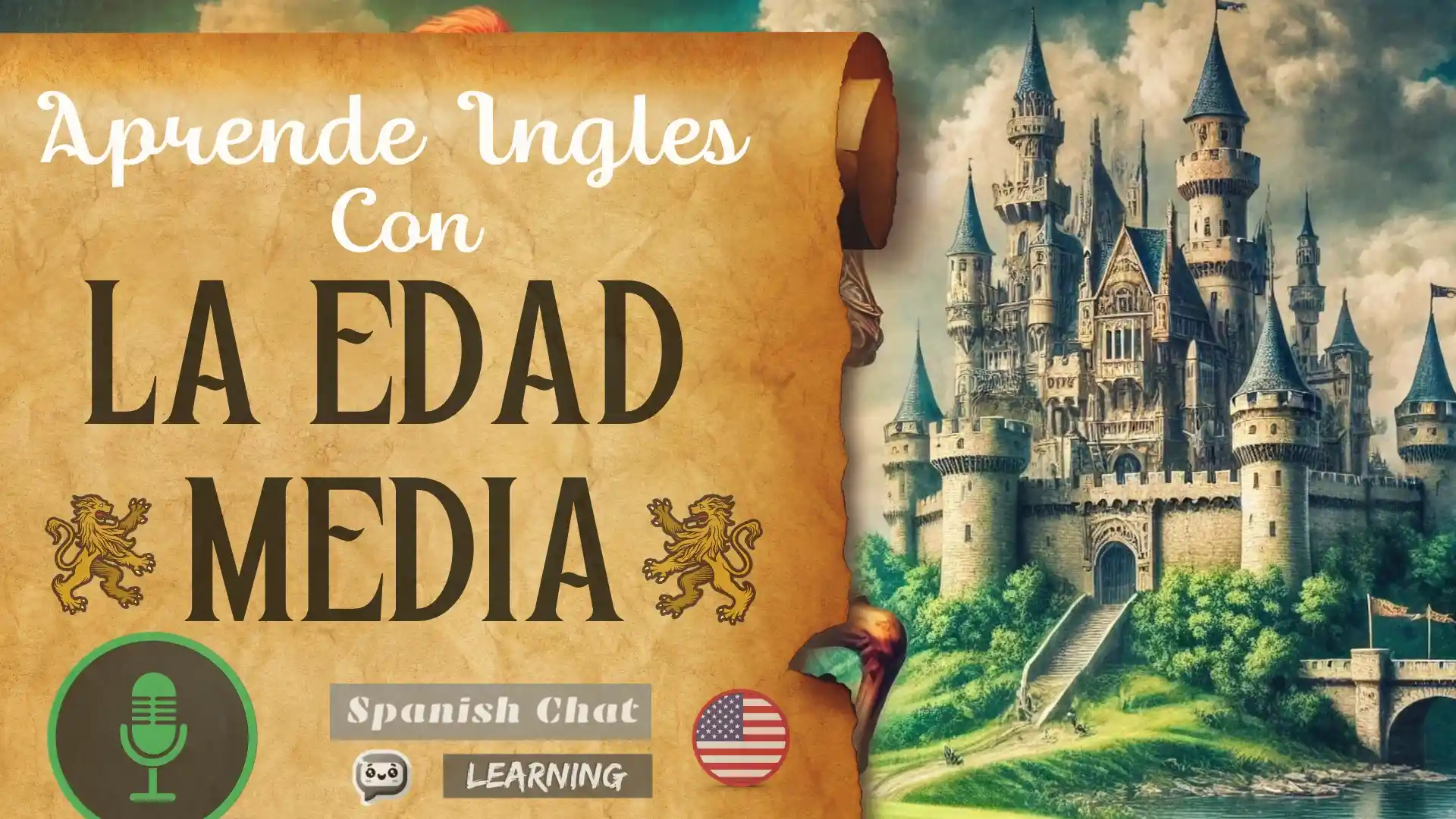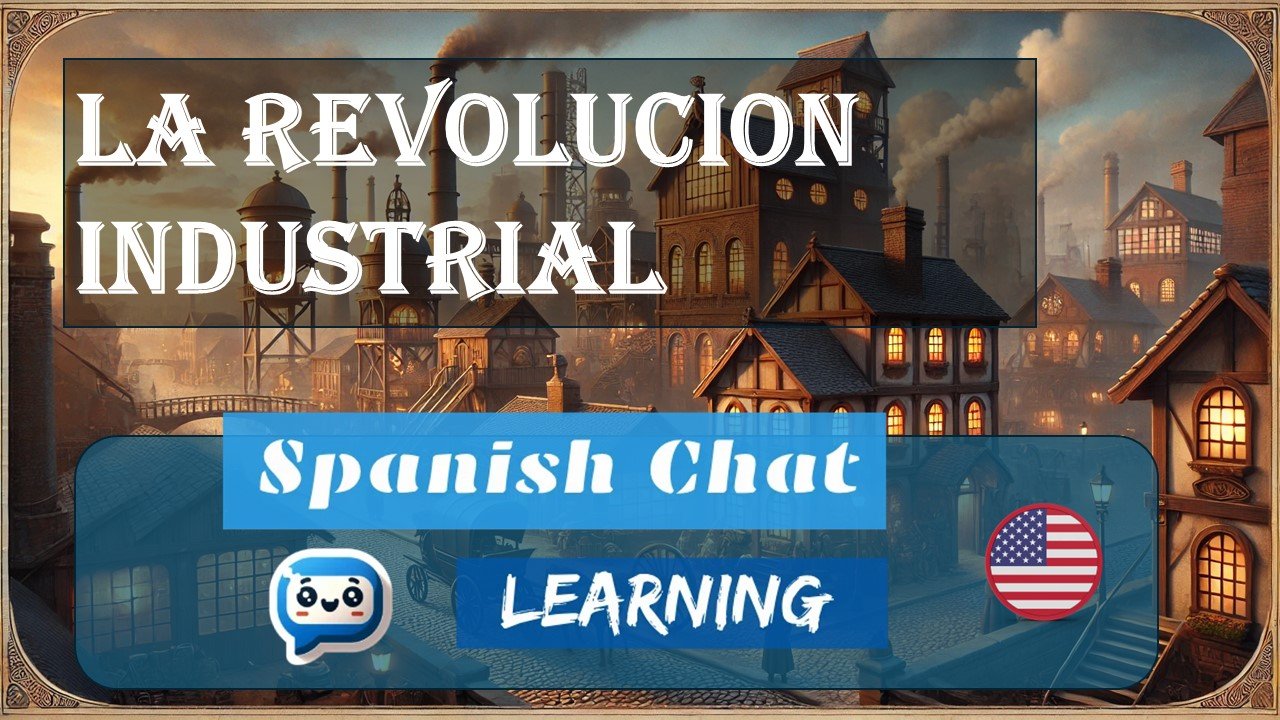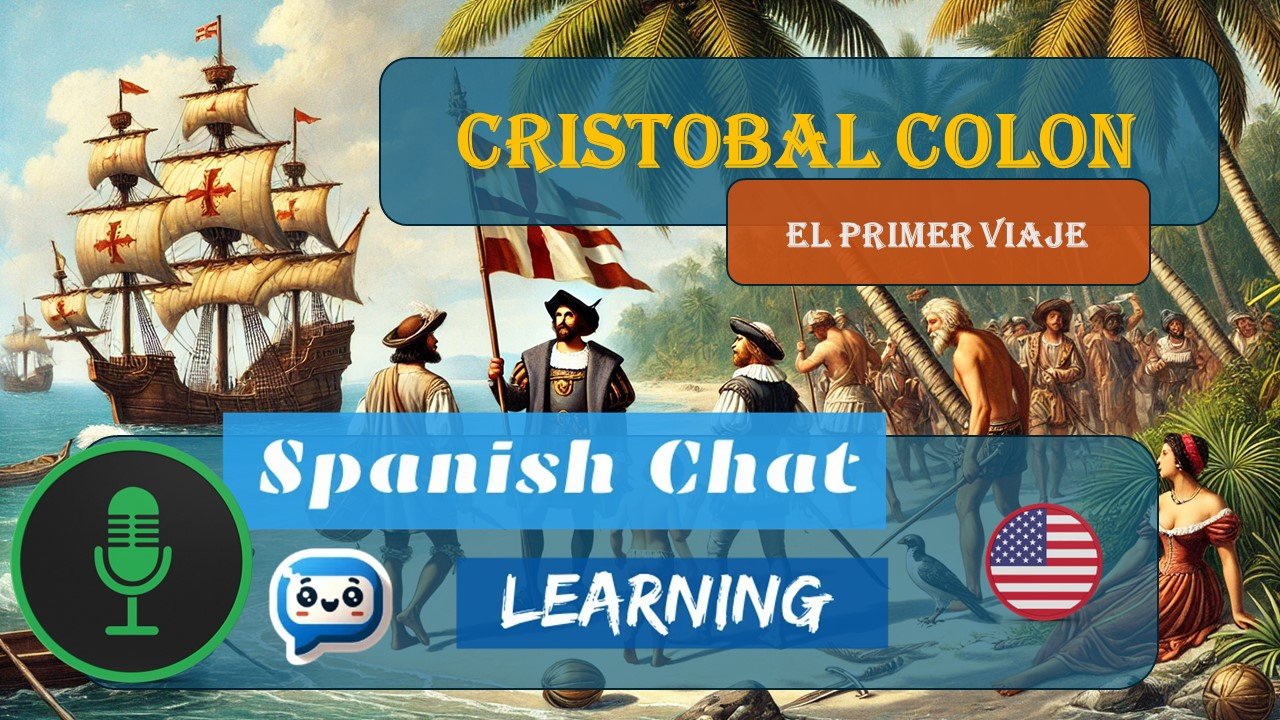La Verdadera Historia de los Vikingos: Más Allá de los Saqueos / Aprende y mejora tu ingles a través de historias
Learn Spanish With History
Domina el Vocabulario en Ingles a Través de 7 Niveles
Haz clic en cada nivel a continuación para practicar y aprender su significado.
Primer Nivel
The year was 793. A calm morning on the shores of Lindisfarne turned into chaos as the horizon filled with the sleek silhouettes of longships.
- Horizon: La línea donde la superficie de la tierra y el cielo parecen encontrarse.
- Sleek: Algo suave, aerodinámico y atractivo en forma.
- Longships: Barcos largos y estrechos utilizados por los vikingos para navegar y realizar incursiones.
Segundo Nivel
The year was 793. A calm morning on the shores of Lindisfarne turned into chaos as the horizon filled with the sleek silhouettes of longships. Monks watched in terror as these unfamiliar warriors stormed their peaceful monastery.
- Monks: Hombres religiosos que viven en monasterios y dedican su vida a la oración y el trabajo.
- Terror: Miedo intenso o pánico extremo.
- Stormed: Entrar en un lugar de forma violenta y repentina.
Tercer Nivel
The year was 793. A calm morning on the shores of Lindisfarne turned into chaos as the horizon filled with the sleek silhouettes of longships. Monks watched in terror as these unfamiliar warriors stormed their peaceful monastery. Leaving nothing but flames and fear in their wake.
- Flames: Las partes visibles del fuego, generalmente de color amarillo o naranja.
- Fear: Una emoción intensa causada por el peligro o la amenaza.
- Wake: El rastro que deja algo al moverse, usado metafóricamente para destrucción.
Cuarto Nivel
The year was 793. A calm morning on the shores of Lindisfarne turned into chaos as the horizon filled with the sleek silhouettes of longships. Monks watched in terror as these unfamiliar warriors stormed their peaceful monastery. Leaving nothing but flames and fear in their wake. This marked the beginning of what history would call the Viking Age.
- Marked: Señalar o indicar un evento o momento importante.
- History: El estudio o registro de eventos pasados.
- Viking Age: El periodo de los siglos VIII al XI en el que los vikingos eran activos en exploración y conquista.
Quinto Nivel
The year was 793. A calm morning on the shores of Lindisfarne turned into chaos as the horizon filled with the sleek silhouettes of longships. Monks watched in terror as these unfamiliar warriors stormed their peaceful monastery. Leaving nothing but flames and fear in their wake. This marked the beginning of what history would call the Viking Age. But who were these mysterious seafarers?
- Mysterious: Algo difícil de entender o explicar; lleno de secretos.
- Seafarers: Personas que trabajan o viajan por el mar.
- Were: Pasado de “are,” refiriéndose a existencia o identidad
Sexto Nivel
The year was 793. A calm morning on the shores of Lindisfarne turned into chaos as the horizon filled with the sleek silhouettes of longships. Monks watched in terror as these unfamiliar warriors stormed their peaceful monastery. Leaving nothing but flames and fear in their wake. This marked the beginning of what history would call the Viking Age. But who were these mysterious seafarers? What drove them to venture into the unknown?
- Drove: Motivó o empujó a alguien a tomar acción.
- Venture: Aventurarse o explorar un lugar arriesgado o desconocido.
- Unknown: Algo que no es familiar o aún no descubierto.
Septimo Nivel
The year was 793. A calm morning on the shores of Lindisfarne turned into chaos as the horizon filled with the sleek silhouettes of longships. Monks watched in terror as these unfamiliar warriors stormed their peaceful monastery. Leaving nothing but flames and fear in their wake. This marked the beginning of what history would call the Viking Age. But who were these mysterious seafarers? What drove them to venture into the unknown? The answer lies in their unyielding spirit for exploration, conquest, and survival in a challenging world.
- Answer: La solución o explicación a una pregunta o problema.
- Unyielding: Algo que no se puede detener o resistir; firme y determinado.
- Survival: El acto de continuar viviendo o existiendo a pesar de condiciones difíciles.

The True History of the Vikings: Beyond the Raids
Aprende y mejora tu ingles a travez de historias
The Vikings: Warriors, Explorers, and Pioneers of the North
Introduction: A Thunderous Arrival
The year was 793. A calm morning on the shores of Lindisfarne turned into chaos as the horizon filled with the sleek silhouettes of longships. Monks watched in terror as these unfamiliar warriors stormed their peaceful monastery, leaving nothing but flames and fear in their wake. This marked the beginning of what history would call the Viking Age. But who were these mysterious seafarers, and what drove them to venture into the unknown?
Origins: Survival Amidst the Ice and Fire
Far to the north, in the rugged landscapes of Scandinavia, the Viking story began. Imagine a place where winters stretched endlessly, and the soil was unforgiving. Survival demanded ingenuity, resilience, and above all, exploration. These lands birthed a society that thrived on the edge of the world—a society where loyalty to your clan was paramount, and honor was often measured by bravery.
Vikings were not a unified people; they were farmers, craftsmen, traders, and warriors from what we now know as Norway, Sweden, and Denmark. Their society was structured yet fierce: jarls, the noble elite, led their communities, while karls, the free men, worked the land and defended their homes. Thralls, or slaves, toiled under them. At the heart of their worldview were the Norse gods, with Odin, the all-father, and Thor, the thunderer, guiding their fate. For a Viking, life was a test, and death was merely a gateway to Valhalla.
The Call to Adventure: Beyond the Frozen Shores
What led these people to set sail across perilous seas? The answer lies in their restless spirit and the promise of wealth and glory. In 793, the raid on Lindisfarne was not just an act of violence; it was a declaration of their arrival on the world stage. Longships, marvels of engineering, became their chariots. With shallow drafts and sleek designs, these vessels allowed them to traverse oceans and rivers alike, reaching lands no one thought possible.
But not all Viking journeys were for conquest. As they explored, they opened up new trade routes, connecting Europe to Asia and the Middle East. Amber, furs, and slaves flowed out of the north, while silk, spices, and silver came back in return. The Vikings were merchants as much as marauders, and their influence reshaped the medieval economy.
The Explorers: Pushing the Limits of the Known World
The Viking desire for discovery led them far beyond their homelands. In 874, they set their sights on Iceland, creating settlements on its volcanic shores. From there, they ventured even further, reaching Greenland under Erik the Red. But their most daring feat came with Leif Erikson, who around the year 1000 sailed westward to a land he called Vinland—modern-day North America.
Imagine the awe and trepidation they must have felt as they set foot on unfamiliar soil, thousands of miles from their homeland. For centuries, the story of Vikings in America was dismissed as myth, until archaeological discoveries in Newfoundland proved otherwise. Leif Erikson’s journey predated Columbus by nearly 500 years, cementing the Vikings as true pioneers of exploration.
Raiders and Builders: The Dual Nature of the Vikings
While tales of Viking raids strike fear and fascination, their legacy is far more complex. In Ireland, they founded Dublin, transforming it into a bustling trade hub. In France, they were granted land in exchange for peace, which would later become Normandy—a region named after the Norsemen themselves. These settlers, far from their warrior roots, blended into the cultures they once plundered, leaving behind a fusion of traditions.
Their sagas, epic stories passed down orally, captured both their brutality and their brilliance. One tale speaks of a Viking chieftain who, after years of conquest, settled down to farm, finding peace in the same earth he once sought to conquer. Such stories reveal the human side of these warriors, who were fathers, sons, and dreamers, as much as fighters.
Vikings also played a role in the Byzantine Empire, serving as elite warriors in the Varangian Guard. These Norsemen, known for their loyalty and fearlessness, were sought after by Byzantine emperors to protect their thrones. Imagine a Viking warrior standing in the opulent halls of Constantinople, clad in foreign armor yet carrying the unyielding spirit of the north. This juxtaposition of cultures speaks to the adaptability and reach of Viking influence.
The Twilight of the Viking Age
No era lasts forever. By the late 11th century, the world began to change. As Christianity spread across Scandinavia, the gods of old gave way to the cross. Kingdoms grew stronger, and the chaos that had once allowed Viking raids to thrive began to fade. The Battle of Stamford Bridge in 1066 marked the symbolic end of the Viking Age. Here, King Harald Hardrada—the last great Viking—met his end, bringing an era of daring exploits to a close.
But even in decline, their influence endured. The Vikings left an indelible mark on language, culture, and history. Words like “berserk” and “fjord” entered our vocabulary, while their maritime innovations paved the way for future explorers.
Everyday Life of the Vikings
Beyond the battles and voyages, the daily life of the Vikings was rich and diverse. Women played a significant role in their society, managing households, farms, and even participating in trade. In some cases, they took up arms as shieldmaidens, legendary warriors whose stories still inspire today.
Craftsmanship was another hallmark of Viking life. From intricately carved jewelry to robust wooden ships, their artistry reflected both practicality and beauty. They were skilled blacksmiths, creating weapons and tools that were as functional as they were elegant. Picture a Viking craftsman meticulously forging a sword, each strike of the hammer a testament to their dedication and skill.
The Vikings also had a love for storytelling and poetry. Their skalds, or poets, were revered for their ability to weave tales of gods, heroes, and great battles. These stories were more than entertainment; they were a way to preserve history and instill values in future generations. Even today, the sagas stand as a window into their world.
The Viking Legal System: Justice and Order
Contrary to popular belief, Viking society was not purely chaotic. They had a well-defined legal system known as the “Thing.” These assemblies were gatherings where disputes were settled, laws were made, and justice was served. Imagine a circle of men, seated under the open sky, debating the fate of an accused thief or the resolution of a land dispute. Justice was communal, and the decisions made at the Thing were binding.
Punishments varied based on the crime. Lesser offenses might result in fines or compensation, while severe crimes like murder could lead to outlawry—a punishment worse than death. An outlaw was cast out from society, stripped of protection, and left to survive on their own, a fate few could endure.
Beliefs and the Afterlife: A Spiritual World
The Vikings’ spiritual beliefs were deeply ingrained in their daily lives. They saw the world as a tapestry woven by the Norns, the goddesses of fate. Their pantheon of gods and goddesses influenced every aspect of life. Odin, the seeker of knowledge, was revered by warriors and poets alike. Freyja, the goddess of love and fertility, was celebrated during harvests, and Thor’s hammer, Mjolnir, was worn as a talisman for protection.
Death, to a Viking, was not an end but a transformation. Warriors who died bravely were believed to ascend to Valhalla, where they would feast and fight until Ragnarok, the end of days. Others might go to Hel, a realm of the dead that was not as grim as it sounds but more a place of rest. These beliefs gave the Vikings a fearless approach to life and death, a quality that made them formidable in battle and resilient in exploration.
Viking Ingenuity: Tools, Trade, and Technology
The Vikings’ success was not solely due to their bravery but also their ingenuity. Their longships were technological marvels, capable of navigating both open seas and shallow rivers. These ships were fast, lightweight, and adaptable, allowing them to strike quickly and retreat just as fast.
Their trade networks were vast, stretching from the Arctic to the Mediterranean. Vikings traded fur, amber, and even slaves for silver, silk, and spices. They brought back not only goods but also ideas, blending cultures and technologies. For example, they adopted the use of coins from the Islamic Caliphates, integrating them into their own trade practices.
Vikings also excelled in agriculture. Despite their harsh environment, they developed innovative techniques to grow crops and raise livestock. These advancements ensured their survival and allowed them to establish permanent settlements in places like Greenland and Vinland.
The Myth and Reality of the Berserkers
Among the most fearsome figures in Viking lore are the berserkers—warriors said to fight in a trance-like fury. The word “berserk” comes from the Old Norse “berserkr,” meaning “bear-shirt,” as these warriors were believed to don animal pelts in battle. Legends tell of berserkers feeling no pain and fighting with the strength of ten men.
But were they real? Some historians believe berserkers may have used intoxicating substances to enter their frenzied state, while others think the tales were exaggerated for dramatic effect. Regardless, the image of the berserker has endured, symbolizing the raw, untamed power of Viking warriors.
Legacy: Warriors of Myth and Reality
Today, the Viking legacy lives on in our fascination with their stories. They are heroes and villains, poets and plunderers, shaped by their environment yet shaping the world around them. Their sagas remind us of the eternal human desire to explore, to conquer, and to create.
So, the next time you hear the creak of a wooden ship or the crash of waves against a rocky shore, imagine the Vikings: bold, unyielding, and forever chasing the horizon. And remember, their story is not just history; it is a reflection of the indomitable human spirit.




